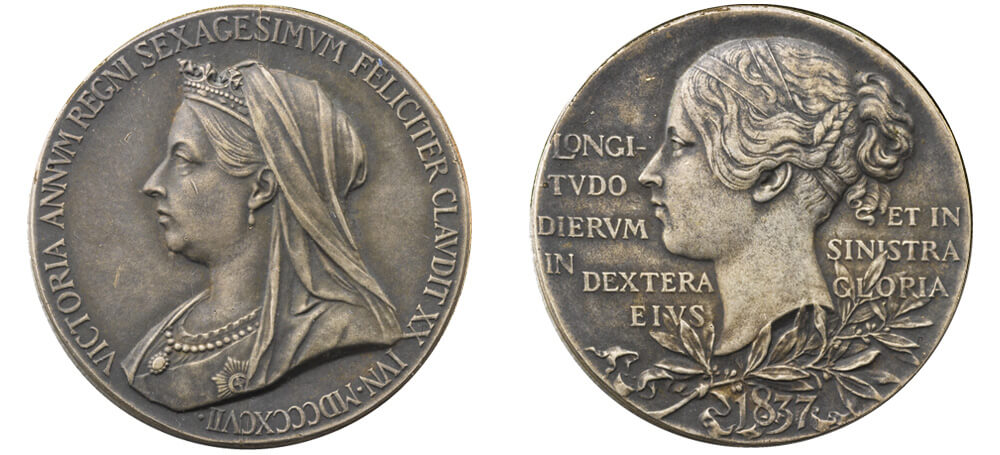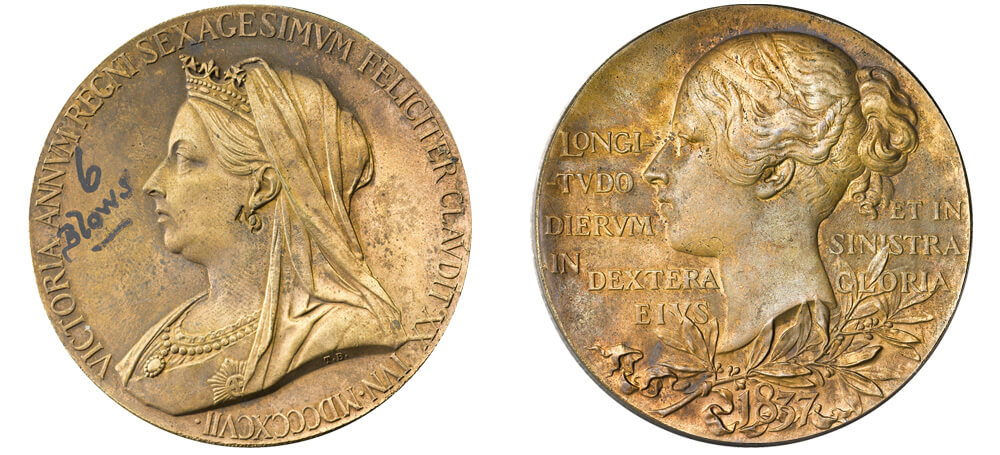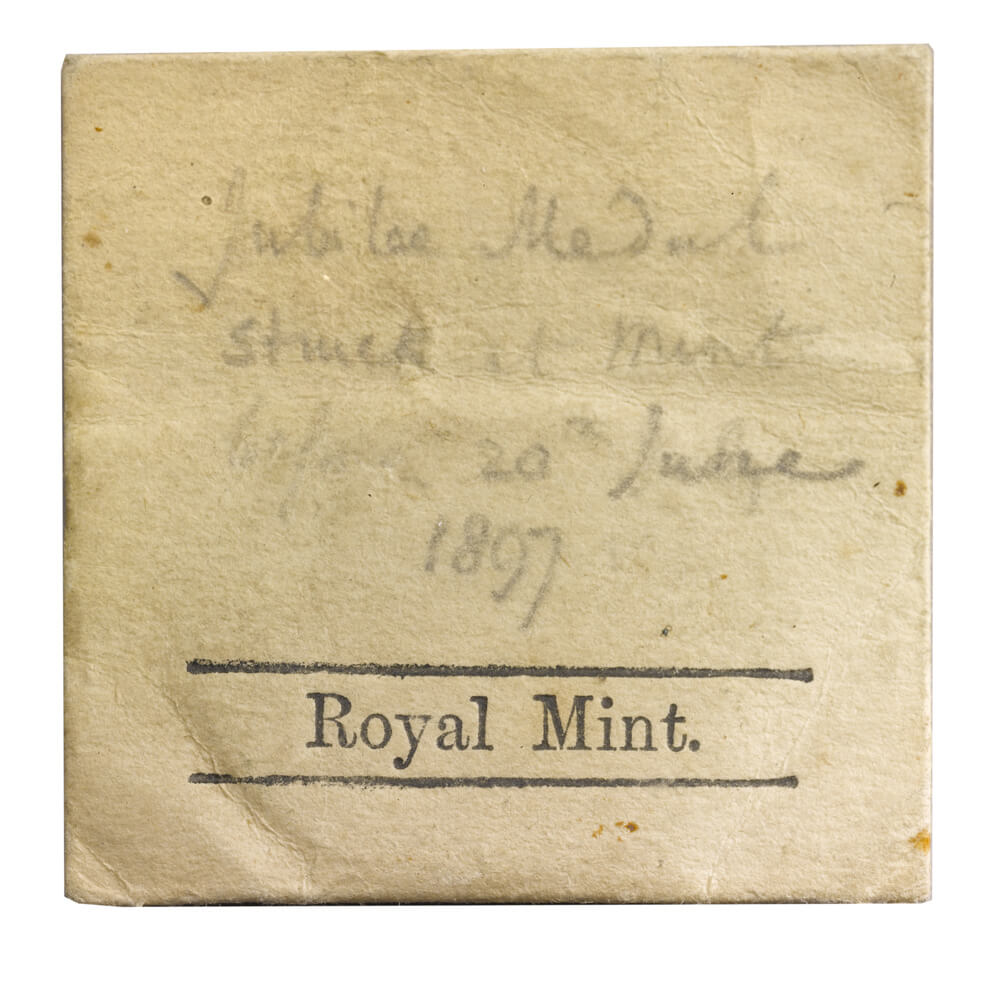Victoria’s Diamond Jubilee medals
To compensate for the absence in 1897 of special coins to mark the Diamond Jubilee of Queen Victoria, the Royal Mint made available for sale to the public a coin-size version of the official commemorative medal. Equivalent in diameter to an old shilling, it was priced at two pounds in gold in a leather case and at one shilling in silver in a paper envelope. These reasonably priced medals were to prove enormously popular, with sales of the silver medals reaching 250,000 before a cap was placed on orders.

To arrive at a medal suitable in appearance for production in more than one size and more than one metal, a series of experiments was carried out on the bronze medals in particular. The collection of the Royal Mint Museum contains a tray of these bronze Diamond Jubilee medals ranging from a deep chocolate colour to a shinier brassy treatment, and many hues and subtle variations in between. One specimen even displays an inked-on reference to it having received six blows from the dies, illustrating the care and attention taken to this process of experimentation.

Also contained within the collection are specimens of the full range of official Diamond Jubilee medals of Queen Victoria. Following a generous donation from a member of the Yorkshire Numismatic Society, the collection now also contains an example of the simple paper envelope in which the silver medals were supplied, identified in manuscript by a former owner. This envelope fills a small but not unimportant gap, and further expands the Museum’s holdings of Jubilee material.

